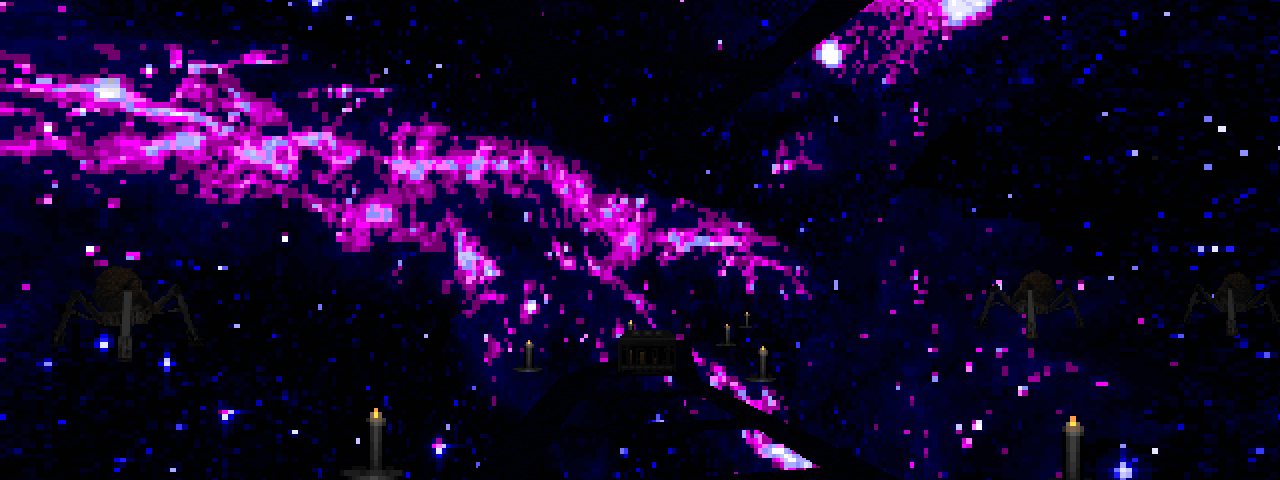
It’s the holidays! Another Doomsday just a few days ago, with Christmas and New Years right on the horizon. There’s another sort of holiday to celebrate today, too: the 25th episode of What’s Awesome, Doom?, and just over three years that I’ve been doing the column!
Yeah, I’ve really only done 25 episodes in all that time. What a professional!
To celebrate the holiday season and these big landmarks, I’ve put together a special episode: one of those Top Ten lists the internet loves so much. Except this is a Top 13 — my personal most memorable maps: three official id maps and ten fan-made maps from my relatively limited WAD-playing career. I just want to make that super clear: this isn’t a Greatest Maps or even a Favorite Maps post. These are the maps that have stuck with me the strongest (in some cases decades later) for whatever reason; in some cases they may not even be very good maps.
Join me on a trip through my twenty-one year life with Doom, condensed into the thirteen maps that influenced me the most! (In roughly (but not quite) chronological order.)
Doom, E1M3
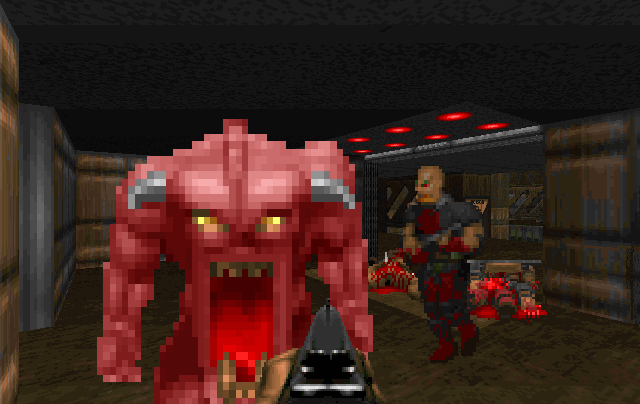
My original Doom experience began at E1M1… and ended at E1M3. I was always an easily-frightened child (some would say I still am), but it was the beginning of Toxin Refinery that put me over the edge. I still remember the sense of dread — the inability to even open the door in that cramped starting room and face the seemingly unkillable pink abomination outside. Which is actually kind of weird, because going back and playing all these levels, I found that the demon and spectre we all remember from the first room of E1M3 actually only appear on Ultra-Violence. So, uh… I guess when my brothers set me up to play, they had me on the hardest difficulty right from the start. Probably hoping to kill me off as soon as possible and stop me whining for my turn to play. That’s older brothers for you.
Doom, E2M7
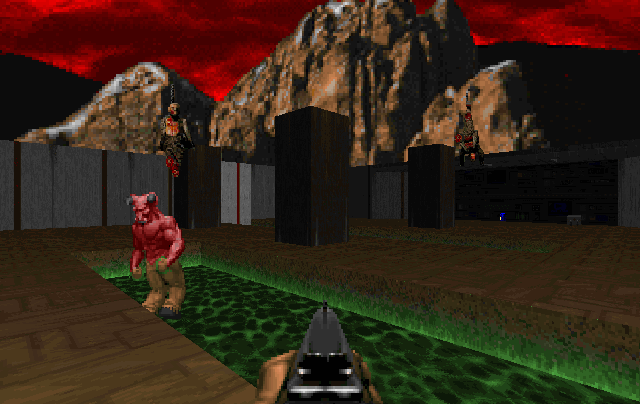
Spawning Vats actually has its roots in some of the earliest stages of Doom‘s development, with a mostly-finished version appearing in the earliest known alpha back in April 1993. This was one of Tom Hall’s maps (before he got fed up with the project and peaced out), and even originally opened with the player right next to three other marines, having just finished the poker game alluded to in Hall’s old Doom Bible. I honestly wouldn’t be surprised if this was the first map ever designed for Doom once map creation began in earnest, and it’s one of the few surviving maps that retains the attempts at semi-plausible military base floor plans Hall started out doing. You know, the ones Romero always says they threw out because they were too boring? But the flat-ish, interconnected design philosophy of Tom Hall honestly holds its own unique charm you don’t find in any others, and the final version of E2M7 adds another whole layer of awesome in the form of Sandy Petersen’s weird, schizophrenic stylings and nonsensical, almost dreamy visuals. (Pictured above: corpses hanging from… the sky?) When I finally got my hands on the registered version of Doom, it was this map more than any other that blew me away.
Doom II, Map29
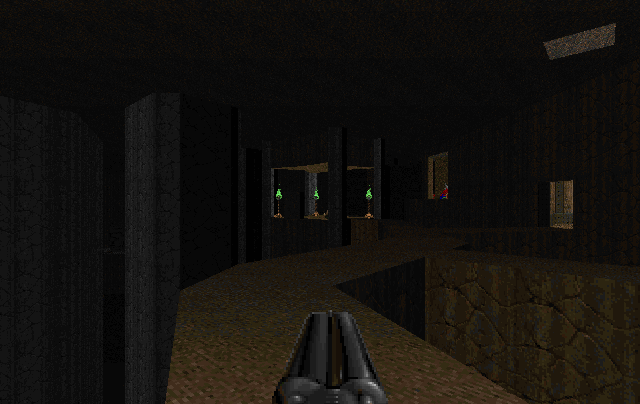
The Living End was unlike any Doom map that came before — a single, massive stone chamber, wound about with side caverns and perilous walkways, the bottom swimming with blood. I love a map where most everything is essentially in view of everything else. It builds a familiarity with the setting and gives you a real sense of place. This is your last stop before Doom II‘s notoriously underwhelming final boss, and maybe that’s why it sticks with you so much. Living End might be Doom II‘s finest moment, and it’s definitely one of Romero’s greatest masterpieces, but what matters most is that it’s the perfect penultimate map — a brooding, atmospheric battle through the dark heart of Hell that leaves you battered, but more resolved and ready than ever for the final showdown. One for the ages.
Mystery DM WAD

As vivid as the memory of this map is, I can’t tell you what it was called, which WAD it was from, who made it, or when it came out. All I know is that it was a deathmatch map my brothers downloaded for Doom II, probably some time in early 1995. The image I’ve got in my head says that it was a single small arena with grated side areas where the weapons and ammo were located. Mostly tan and silver, brightly-lit, with a pyramid-shaped structure you could climb in the center. That’s the best description of our mystery map I can give, since I only ever saw it once as a kid. But the reason I remember it is because it was the first PWAD I ever saw with my own eyes. I didn’t even fully understand the implications at the time — that games were created by people; that regular people like me could make mods… or even whole videogames ourselves. In 1995, I was mostly just confused about where this new map had appeared from. But this is where the seed was planted, and twenty years later I’m making WADs of my own.
Memento Mori II, Map17
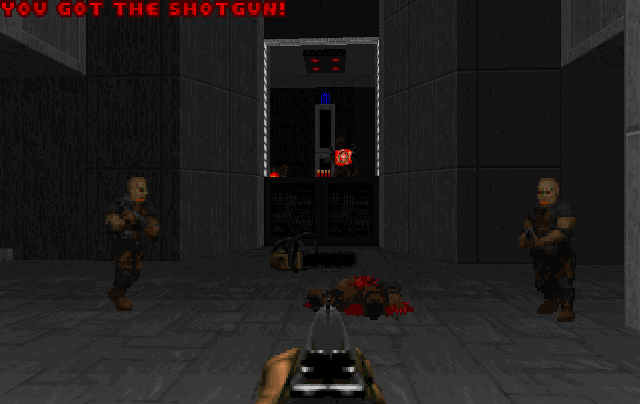
What can I say? It’s the music. No One (Ever Comes From Here) may be a great map, but let’s be honest: it’s lodged firmly in our collective brain matter because of Mark Klem’s unforgettable midi track, Destiny. There are more than a few monumental musical pieces in Memento Mori II, but Destiny takes the cake. It begins with your standard epic buildup — a moody intro flowing into a swell of strings to get you feeling the stakes. Then the low drums ebb in. But after that, everything changes, and you’re suddenly listening to some slasher flick music out of nowhere. For the next few minutes, Klem swerves back and forth between the climactic orchestral stuff and the sounds of otherworldly horrors and then back again, finally weaving them together into a soundtrack fit for the end of days. The map itself is actually a bit of a letdown after all that. This midi deserved to be featured in a map to rule them all; a apocalyptic showdown, a last stand against the full strength of Hell. I have never felt as hyped up and invested in a Doom map than in No One — and then slightly let down that it didn’t live up to the hype — but I have Mark Klem to thank for that.
STRAIN, Map02
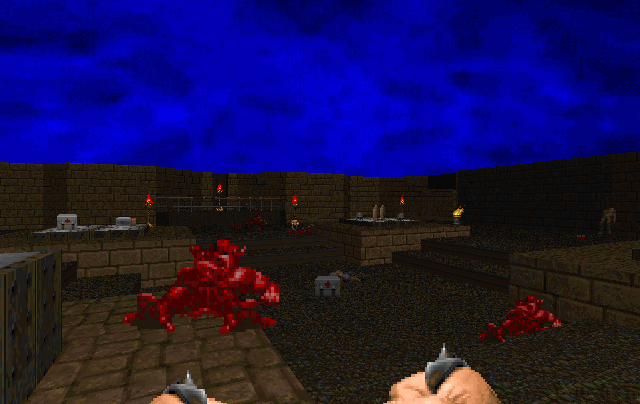
I… play STRAIN a lot. It’s like my personal Deus Ex — any time someone mentions it, I’ve got to install it again (or in this case, unzip it again). I’ve run through the first four or five maps more times that I can count. Out of those, it’s Outskirts, Map02, that always springs to mind when I think of STRAIN. It’s a series of brick walkways and channels constantly rising and lowering to provide access to deeper parts of an extensive fortress. I still don’t really understand the mechanics of its constantly shifting floors, but it doesn’t really matter; the map keeps you on track no problem, and the changing layout is just a way of conveying you from point A to point B with style. It’s hard to describe how clever and fun this map is. As another plus, it provides a lot of opportunities to get acquainted with STRAIN’s gnarly new flayed demon.
STRAIN, Map29
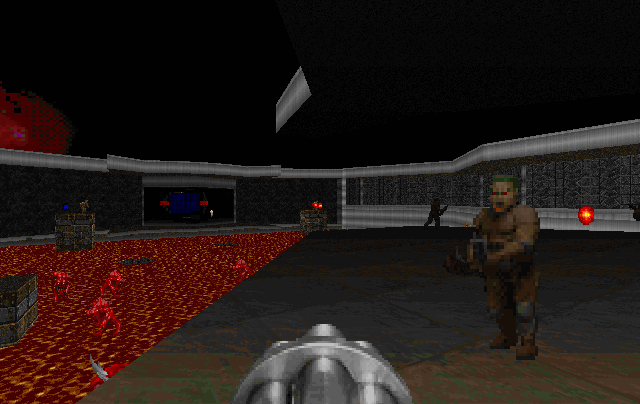
No surprise that STRAIN gets the honor of being the only WAD to appear twice on this list — you know, being the best WAD ever made. Map29, Self-Destruct, doesn’t involve anything actively self-destructing, but it does get across that sense of impending doom. The station is down to flickering emergency lights, some serious demons are on the prowl, and lava is bubbling through the floor panels. Self-Destruct, like The Living End before it, is the perfect final, pre-boss map for its respective WAD. The situation are more dire than ever, and few maps nail the feeling of everything going to hell quite like this.
Phobos Nukage Base, Map01
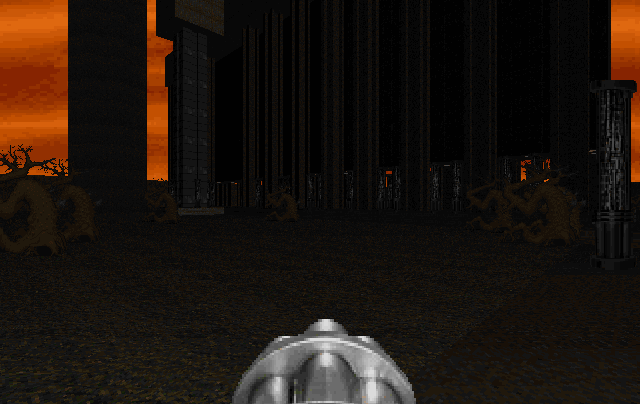
A lengthy, nonlinear, not particularly well-designed colossus. I played Phobos Nukage Base when it was still in development, and remember being in absolute awe of its scale, both in terms of the raw acreage it covers as well as its clear emphasis on verticality. There’s nothing terribly special about the map aside from one quality: it’s big. B. I. G. Otherwise it’s a simple, wide-open, and directionless keyhunt, more or less. But when I first played this thing… Man, I had no idea Doom maps could be so grandiose. (And it now apparently comes with two extra maps in slots 02 and 03, which I’ll have to get around to checking out sometime.)
Deus Vult
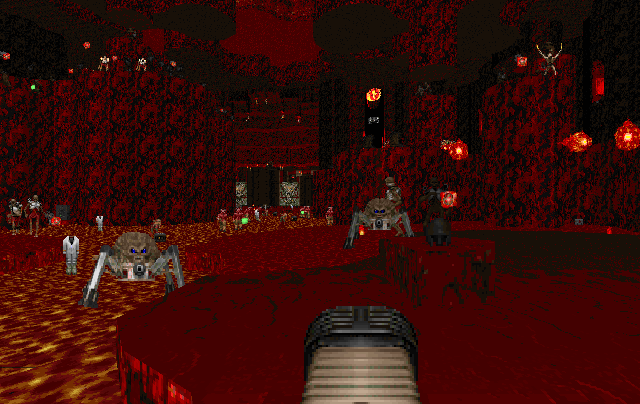
Here’s that same sense of scale, but in the hands of a master. Deus Vult doesn’t just transcend my general lack of enthusiasm for slaughter maps, it cements itself as my all-time favorite single-map WAD (which I know it’s technically not, but shh). No map I’ve played before or since has done the One Marine Marching on the Gates of Hell shtick better. If you ever want a serious power trip — the satisfaction and mad delight of taking on what feels like every demon ever birthed out of Hell — look no further.
Scythe II, Map16
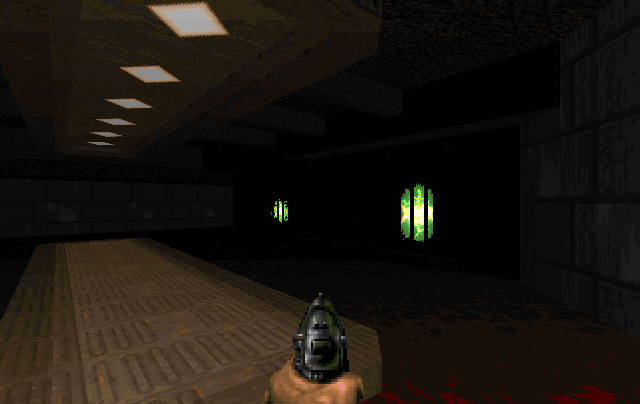
Hey! — what’s that in the shadows over there? Oh, it’s just Mr. X, and — oh, he’s probably turned you to goo already in the time it took to read this sentence. Mr. X (the map) is a nerve-rending creepfest whose titular Mr. X can (and will) melt your face off in a split second if you give him a chance. This is the introduction to one of Scythe II‘s two crazy cool custom monsters, and it couldn’t have been done better. It’s the fact that you don’t know exactly what’s even after you that makes this the most terrifying Doom map to memory.
Reverie, Map13
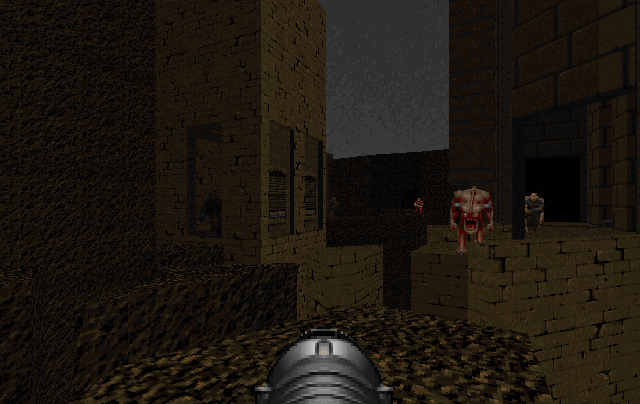
Classic, classic, classic. Nothing describes Reverie better, and its thirteenth map, Stronghold Earth, encapsulates that sensibility. Earth is in ruins. A deep dusk has fallen over the land. The map is a running battle through the halls of the last surviving stronghold, surrounded on all sides by broken earth and the sea come to swallow up the crumbling coast. I’m dramatizing here, but Doom lets you do that, bringing your own interpretation to maps — especially intentionally underdetailed ones like Reverie’s. I can’t say whether the allure is the map itself or the story I’ve created around it in my head. Probably both.
50 Shades of Graytall, Map14
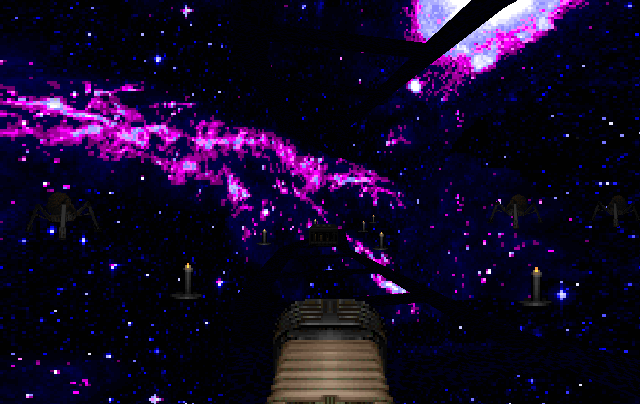
Admittedly, I only played 50 Shades of Graytall a month and a half ago, so “most memorable” is a stretch. But how could I ever forget this map? Let go of all your expectations of what a Doom map looks like. There are no techbases, no castles. No Phobos or Deimos, no Earth or Hell. Maybe Heaven — if this is what Heaven looks like in the Doom universe. A trippy outing through pillared halls and runed-graven corridors on the edge of eternity. Where are we, exactly? Who cares; just enjoy the journey.
Apostasy on Amalthea, E4M8
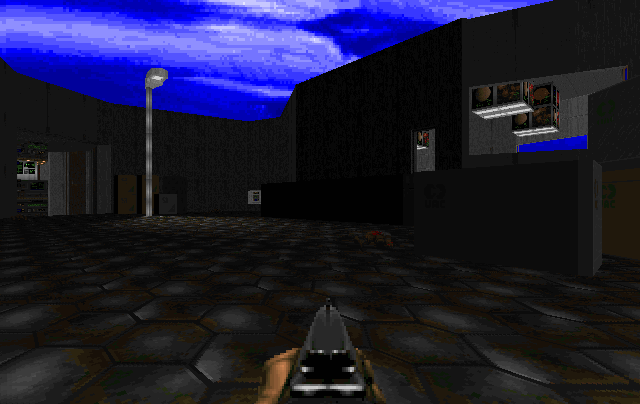
If you don’t plan on playing through Nicolas Monti’s underrated tour de force, Apostasy on Amalthea… firstly, what’s wrong with you? — but second, you at least have to check out its final map. Amalthea’s “Vanilla Warriors” is a master class in building atmosphere, tension, and a sense of place. It’s all leadup: eerie loading docks, mess halls, and storage rooms all devoid of enemies, where the unease builds steadily as you gather weapons to fill out your arsenal and prepare for the very obvious fight that’s coming. But where Warriors eclipses 99% of the competition is in its humanity. Playing it gives me the feels, to use the overutilized but fitting vernacular. I talked about it a bit way back in the review of Back to Saturn X, but Doom has the unique ability to get to my heart of hearts quicker than any other game. Even without story or characters — just give me the right combination of music and map design, and I can get to feeling some difficult-to-justify heartache… in the best possible way. Maps like Vanilla Warriors are beautiful in a way that is bigger than Doom, not confined to the game’s basic action and exploration, its running and gunning. They achieve something wonderful and special that transcends the game in which they’re set. I couldn’t choose a map that better embodies that than Amalthea’s closer.
And sure, you might not feel the same way about this particular map. In fact, I can almost guarantee you don’t. But I’m willing to bet there are maps out there that do make you feel something real, and that’s what this episode is about, what this column has been about, and what I’ll keep looking for in that deep, deep well of Doom WADs out there.
Thanks for reading, and I hope you’ll stick with me as we continue on our quest to find out… What’s Awesome, Doom?
See you next time!